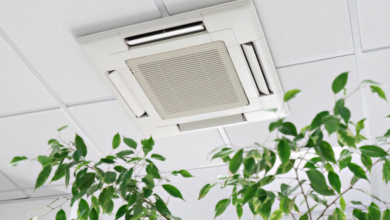How to Choose the Right Decking Material for Your Climate

When building an outdoor deck, one of the most critical decisions you’ll make is choosing the right decking material, especially when the climate is a major factor. Whether you’re dealing with intense summer heat, heavy rainfall, snowy winters, or fluctuating humidity, your local weather can directly affect the longevity and performance of your deck. Making a smart choice upfront means fewer repairs, better aesthetics, and a longer-lasting structure.
If you’re considering deck installation in Columbus, you’re likely familiar with a climate that brings both cold winters and humid summers. This type of environment demands a decking material that can resist moisture, withstand temperature fluctuations, and offer long-term durability without constant maintenance. Columbus’s seasonal extremes make it essential to use materials that can expand and contract without warping or cracking.
Understanding How Climate Affects Deck Materials
Before settling on a material, it’s important to understand how climate plays a role in its behavior over time. In hot and dry regions, wood decking like cedar or redwood may dry out too quickly, leading to cracking or splintering. In contrast, humid and wet climates can cause untreated wood to rot or become susceptible to mold and mildew. Composite and PVC decking tend to resist both extremes, offering low maintenance and strong performance year-round.
In climates with freeze-thaw cycles, choosing a material that won’t absorb water is crucial. When water gets into porous decking and freezes, it can cause cracks, shifts, and surface damage. Materials like capped composite or PVC are ideal because they don’t absorb moisture and remain stable in various conditions.
The Role of Proper Installation
Choosing the right material is only half the equation. The other half lies in how that material is installed. Even the most weather-resistant deck boards can fail if installed incorrectly. Elements like board spacing, substructure drainage, and airflow become particularly important in moisture-prone regions.
That’s why professional deck installation is essential. A skilled installer understands how to account for material-specific expansion rates, local building codes, and climate challenges. By addressing these factors during installation, professionals prevent problems such as buckling, sagging, or premature rot. This expertise adds value by extending the life of your deck and enhancing its safety and appearance.
Site Preparation: A Crucial Step Before Installation
Your yard’s natural grading, soil stability, and drainage capacity all affect the long-term performance of your deck. Without proper planning, water pooling can lead to premature material degradation or foundation issues. That’s why taking time to prepare your property for a deck installation is just as important as choosing the right materials.
This step includes evaluating water runoff patterns, adjusting the slope where needed, and ensuring a solid foundation is in place before any deck boards are laid. With the proper groundwork, your deck is more likely to stay level, resist erosion, and stand up to the elements.
Conclusion
Climate-smart decking choices go beyond aesthetics, they impact the long-term value, safety, and usability of your outdoor space. From material selection to installation and site preparation, every step should be tailored to your region’s unique weather conditions. With professional insight and climate-appropriate materials, your deck can be a lasting investment that performs beautifully year after year.





